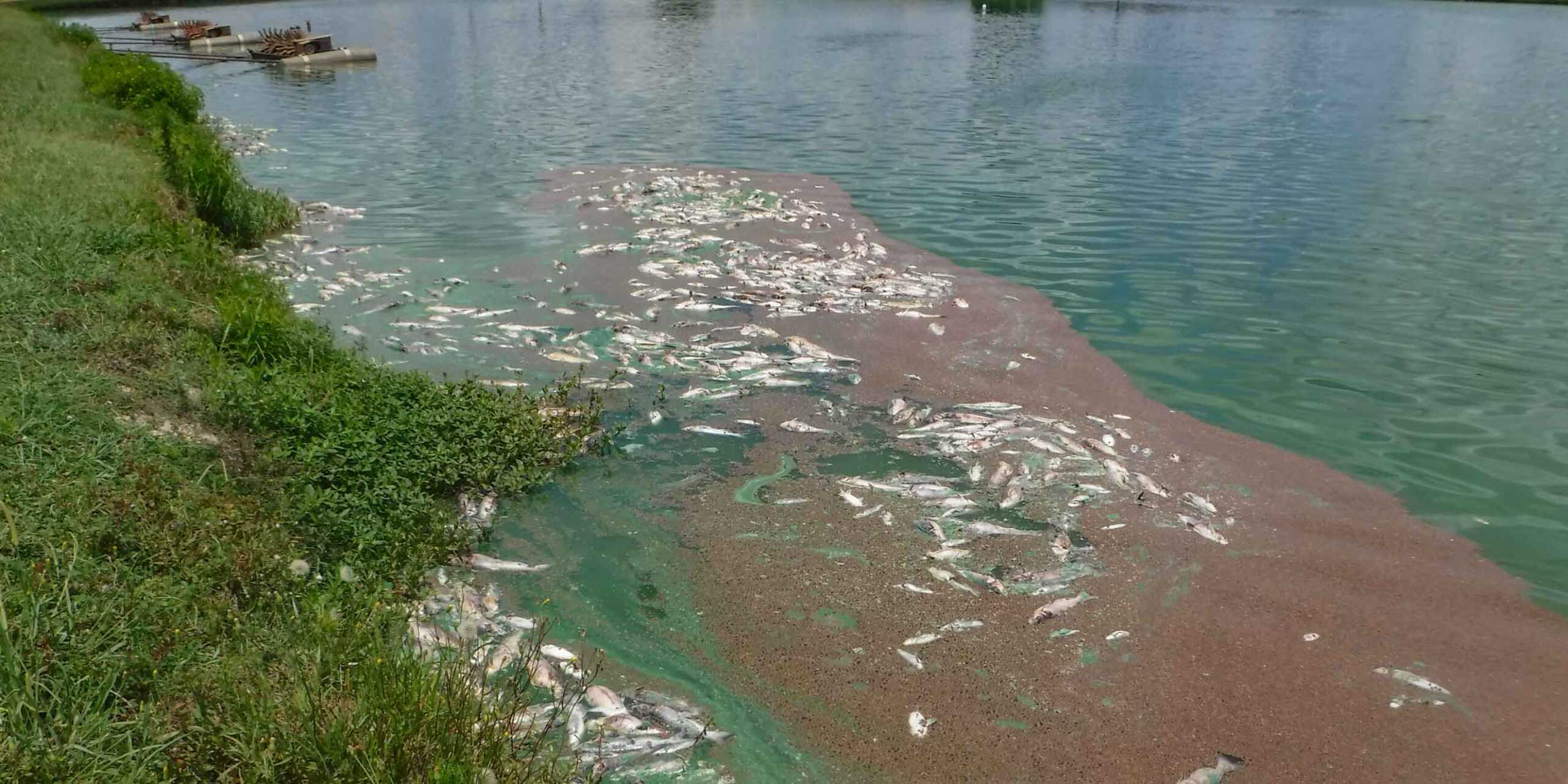
Research Areas
Cyanobacteria and Animal Health

Current Projects
Harmful algal blooms: Prevalence and control measures for the domestic fish and shellfish industries
Funding: USDA - Agricultural Research Service - $2,088,566
June 2020 - May 2025
Benjamin Beck (USDA ARS)
Past Projects
Toxic cyanobacterial blooms and fish farming
Funding: Auburn University Agricultural Experimental Station - $54,650
October 2007 - September 2008
Jesse Chappell (co-PI, Auburn University)
Biomanipulation as a tool to enhance aquaculture through the management of toxic cyanobacteria
Funding: USDA – NIFA Aquaculture program – $261,613
September 2017 – August 2020
Luke Roy (co-PI, Fisheries)
Publications
- Belfiore, A., R. P. Buley, E. G. Fernandez-Figueroa, M. Gladfelter, and A. E. Wilson. 2021. Zooplankton as an alternative method for controlling phytoplankton in catfish pond aquaculture. Aquaculture Reports 21:100897. - Link to Publication
- Buley, R. P., A. Kelly, L. Roy, E. G. Fernandez-Figueroa, M. Gladfelter, A. Belfiore, and A. E. Wilson. 2021. Controlling Microcystis blooms in Alabama catfish aquaculture. Alabama Cooperative Extension Fact Sheet ANR-2757. 5pp. - Link to Publication
- McCain, S., R. R. Sim, E. W. Howerth, S. Aschenbroich, S. G.M. Kirejczyk, B. McHale, C. Jerry, J. J. Kottwitz, A. E. Wilson, and R. McManamon. 2020. Myonecrosis and death due to presumed microcystin toxicosis in American white pelicans (Pelecanus erythrorhyncos). Journal of Zoo and Wildlife Medicine 51(2):407-415. - Link to Publication
- Thurlow, C. M., M. A. Williams, A. Carrias, C. Ran, M. Newman, J. Tweedie, E. Allison, L. N. Jescovitch, A. E. Wilson, J. S. Terhune, and M. R. Liles. 2019. Bacillus velezensis AP193 exerts probiotic effects in channel catfish (Ictalurus punctatus) and reduces aquaculture pond eutrophication. Aquaculture 503:347-356. - Link to Publication
- Wilson, A. E., M. F. Chislock, Z. Yang, M. U.G. Barros, and J. F. Roberts. 2018. Pond bank access as an approach for managing toxic cyanobacteria in beef cattle pasture drinking water ponds. Environmental Monitoring and Assessment 190:247. - Link to Publication
- Doster, E., M. F. Chislock, J. F. Roberts, J. J. Kottwitz, and A. E. Wilson. 2014. Recognition of an important water quality issue at zoos: prevalence and potential threat of toxic cyanobacteria. Journal of Zoo and Wildlife Medicine 45(1):165-168. - Link to Publication
- Wilson, A. E., M. F. Chislock, E. Doster, R. A. Wright, J. J. Kottwitz, H. Walz, and H. Rose. 2013. Toxic algae threaten livestock health. The Alabama Cattleman June 2013:16-17. - Dowload Publication (PDF)
- Knoll, L. B., O. Sarnelle, S. K. Hamilton, C. E. H. Kissman, A. E. Wilson, J. B. Rose, and M. R. Morgan. 2008. Invasive zebra mussels (Dreissena polymorpha) increase cyanobacterial toxin concentrations in low-nutrient lakes. Canadian Journal of Fisheries and Aquatic Sciences 65(3):448-455. - Link to Publication
- Sarnelle, O., A. E. Wilson, S. K. Hamilton, L. B. Knoll, and D. F. Raikow. 2005. Complex interactions between the zebra mussel, Dreissena polymorpha, and the harmful phytoplankter, Microcystis aeruginosa. Limnology and Oceanography 50(3):896-904. - Link to Publication
- Raikow, D. F., O. Sarnelle, A. E. Wilson, and S. K. Hamilton. 2004. Dominance of the noxious cyanobacterium Microcystis aeruginosa in low-nutrient lakes is associated with exotic zebra mussels. Limnology and Oceanography 49(2):482-487. - Link to Publication
- Wilson, A. E. 2003. Effects of zebra mussels on phytoplankton and ciliates: A field mesocosm experiment. Journal of Plankton Research 25(8):905-915. - Link to Publication
- Wilson, A. E. and O. Sarnelle. 2002. Relationship between zebra mussel biomass and total phosphorus in European and North American lakes. Archiv für Hydrobiologie 153(2):339-351. - Link to Publication